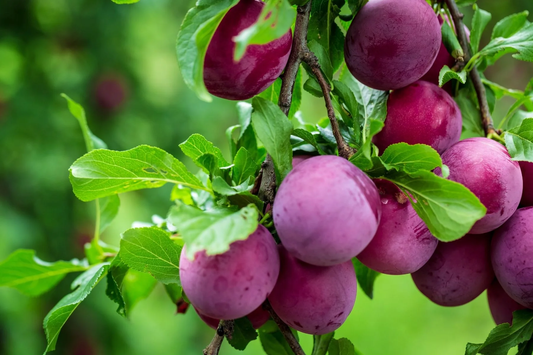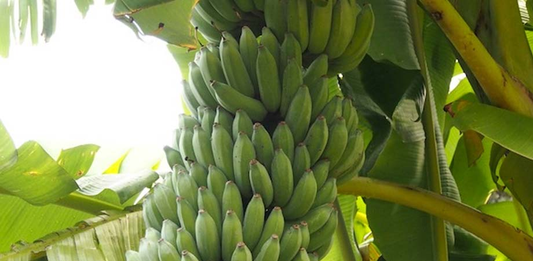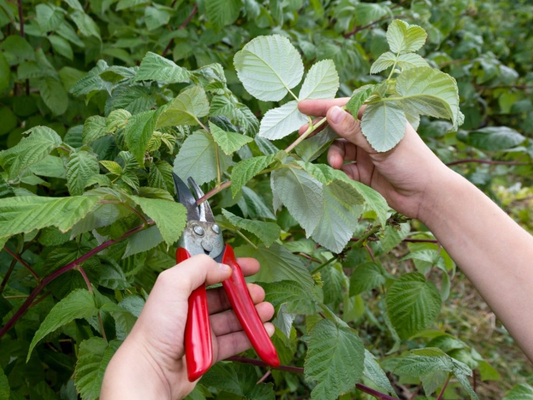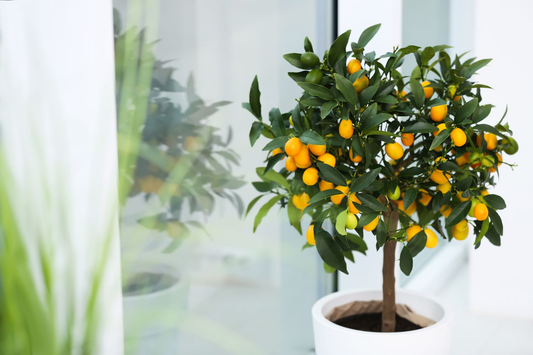How to Grow Indoor Flowering Plants from Seeds
Share
Explore This Article
- 1. Introduction
- 2. Choosing the Right Flowering Plants for Indoor Growing
- 3. Essential Materials and Tools for Starting Seeds Indoors
- 4. How to Prepare Your Containers and Soil for Indoor Seed Planting
- 5. Selecting and Preparing Flower Seeds for Planting
- 6. Planting Flower Seeds Indoors: Step-by-Step Guide
- 7. Creating the Ideal Growing Environment for Indoor Seeds
- 8. Caring for Indoor Flowering Seedlings
- 9. Common Problems When Growing Indoor Flowering Plants from Seeds
- 10. How to Encourage Indoor Flowering for Seed-Grown Plants
- 11. Transplanting Your Flowering Plants Outdoors or Keeping Them Indoors
- 12. Troubleshooting: Why Your Indoor Flowering Plants May Not Be Growing
- 13. Conclusion
- 14. Frequently Asked Questions (FAQ)
1. Introduction
Indoor flowering plants can add a vibrant touch to any living space, offering a splash of color and fragrance all year round. Whether you live in a small apartment, a cozy house, or a spacious office, growing flowering plants indoors is a wonderful way to bring nature inside. Not only do these plants enhance the aesthetic appeal of your home, but they also improve air quality and create a calming environment.
While purchasing ready-grown flowering plants is an option, growing them from seeds offers several advantages:
- Cost-Effective: Buying seeds is much more affordable than purchasing mature plants, and it allows you to grow a variety of flowers without breaking the bank.
- Variety and Selection: Starting from seeds gives you access to a wider range of flowers, including rare or unique varieties that may not be available in stores.
- Satisfaction and Learning: Growing plants from seed is a rewarding process that helps you learn about plant development and care, offering a sense of accomplishment when you see your efforts bloom.
In addition to the financial benefits, starting flowers from seeds indoors also allows you to:
- Control the growing conditions from the very beginning.
- Ensure your plants are healthy and pest-free from the start.
- Have full control over the type and quality of soil, light, and water your plants receive.
Overall, growing flowering plants from seeds indoors can be both a cost-effective and highly rewarding experience that leads to a vibrant, personal garden within the comfort of your home.

2. Choosing the Right Flowering Plants for Indoor Growing
When selecting flowering plants to grow indoors from seeds, it's essential to consider several key factors that will ensure their success in an indoor environment. These factors will determine whether your plants thrive or struggle to grow. Here are the main considerations:
- Light: Most flowering plants require plenty of natural light to thrive. Choose plants that can tolerate the light conditions available in your home, whether it’s bright, indirect light or lower light levels. If natural light is limited, consider supplementing with grow lights.
- Temperature: Indoor plants generally prefer moderate, stable temperatures. Most flowering plants grow best in temperatures between 65°F and 75°F (18°C - 24°C). Avoid placing plants in drafts or near heating vents.
- Humidity: Indoor air can be dry, especially in winter. Many flowering plants require higher humidity levels, so it may be necessary to increase humidity using a humidity tray, misting, or a room humidifier.
Some of the best flowering plants for growing indoors from seeds include:
- African Violets: Known for their vibrant, colorful blooms and compact size, they thrive in indirect light and moderate temperatures.
- Begonias: These plants offer beautiful flowers and foliage. They prefer bright, indirect light and higher humidity levels.
- Geraniums: Geraniums are easy to grow indoors from seed, thriving in bright light and offering long-lasting, colorful blooms.
Other indoor flowering plant varieties that thrive from seeds include:
- Impatiens: Great for lower light conditions and easy to grow from seed.
- Petunias: These colorful flowers grow well in bright, indirect light and bloom abundantly indoors.
- Primroses: A perfect choice for cooler indoor environments with moderate light.
3. Essential Materials and Tools for Starting Seeds Indoors
Starting seeds indoors requires a few essential materials and tools to create the ideal environment for healthy growth. Here’s a list of the key items you’ll need:
- Seed Trays, Pots, or Containers: Use seed trays, pots, or any container with drainage holes to ensure that water doesn’t accumulate at the bottom. Small pots or a seed-starting tray with compartments are perfect for starting multiple seeds at once.
- Seed-Starting Mix or Soil: Choose a lightweight, well-draining seed-starting mix specifically designed for germination. Avoid regular potting soil, as it may be too dense and may prevent seeds from sprouting.
- Light Sources: Natural Light vs. Grow Lights: If you have enough natural sunlight, place your containers on a windowsill. However, if light is insufficient, consider using grow lights. These provide the necessary spectrum of light for seedling development and ensure your plants get the right amount of light.
- Watering Tools: Spray Bottles or Watering Cans: A fine mist spray bottle works well for lightly moistening the soil without disturbing the seeds. A watering can with a gentle spout is also useful once seedlings have sprouted.
- Temperature Control and Humidity Trays: Many seeds need warmth and humidity to germinate. A humidity tray or dome can help maintain the required moisture levels. Some plants may also benefit from a heating mat to keep the soil warm for better germination.
4. How to Prepare Your Containers and Soil for Indoor Seed Planting
Proper preparation of your containers and soil is crucial for successful seed planting. It ensures that your seeds have the best chance to grow strong and healthy. Here’s a step-by-step guide on how to prepare them:
- Importance of Good Drainage in Containers: Drainage is essential for preventing waterlogged soil, which can lead to root rot. Without proper drainage, your seedlings may struggle to survive. Ensure that the containers you use, whether pots or seed trays, have drainage holes at the bottom. If they don’t, consider drilling holes yourself.
- Selecting the Right Soil Mix (Seed Starting Mix vs. Regular Soil): A seed-starting mix is lighter and finer than regular potting soil, providing better aeration and drainage. This is vital for seed germination, as it allows roots to grow freely. Regular potting soil tends to be too dense, which can suffocate seedlings. Make sure to choose a sterile, well-draining mix that is specifically designed for seed starting.
- How to Sterilize Containers to Prevent Diseases: Before using any containers, it's a good practice to sterilize them to avoid transferring diseases or pests. Wash your containers thoroughly with warm, soapy water and rinse well. To sterilize, you can soak them in a solution of 1 part bleach to 9 parts water for about 10 minutes, then rinse and dry them completely before planting.
- Adding Drainage Holes if Necessary: If your container lacks drainage holes, it’s essential to add them to ensure water can escape. You can drill holes in plastic, ceramic, or even metal containers. If drilling isn’t an option, you can use small stones or pebbles at the bottom of the container to improve drainage, though this is less ideal than having holes.

5. Selecting and Preparing Flower Seeds for Planting
Choosing and preparing your flower seeds correctly is an important step for ensuring successful germination and healthy plant growth. Here’s how to select and prepare flower seeds for planting:
- How to Select Quality Seeds: Always choose high-quality seeds from a reputable source. Look for seeds that are fresh, with no visible signs of damage, discoloration, or mold. If possible, purchase seeds from established seed companies or trusted local nurseries. Quality seeds will give your plants a better chance to thrive indoors.
-
Types of Seeds: Heirloom, Hybrid, or Organic: There are several types of flower seeds, each with its benefits:
- Heirloom Seeds: These are open-pollinated varieties that have been passed down for generations. They tend to be more resilient and are known for their unique flavor or appearance.
- Hybrid Seeds: These are crossbred varieties that often produce stronger, more disease-resistant plants. However, their seeds may not produce offspring that resemble the parent plant.
- Organic Seeds: Grown without synthetic pesticides or fertilizers, these seeds are perfect for those who want to grow their plants naturally and environmentally friendly.
- Pre-Soaking Seeds or Scarification for Tough Seeds: Some seeds, particularly those with tough outer coatings, may benefit from pre-soaking or scarification (scratching the seed coat). Pre-soaking seeds in water for 12–24 hours can help soften the coating and speed up germination. Scarification can be done using sandpaper or a knife to break through the tough seed coating.
- Seed Packet Information to Check (Planting Depth, Spacing): Always read the seed packet carefully. The packet provides vital information about the planting depth, spacing between seeds, and optimal soil temperature for germination. Following these guidelines ensures that your seeds have the best environment to grow.
6. Planting Flower Seeds Indoors: Step-by-Step Guide
Planting flower seeds indoors requires careful attention to detail to ensure the seeds have the best chance for successful germination. Follow this step-by-step guide to plant your seeds properly:
-
How Deep to Plant Different Types of Seeds: The depth at which you plant your seeds is crucial for their successful germination. As a general rule:
- Small seeds: Plant small seeds, like petunias or alyssum, about 1/8 inch deep.
- Medium-sized seeds: Seeds like marigolds or snapdragons should be planted 1/4 inch deep.
- Larger seeds: Larger seeds such as sunflowers or zinnias should be planted 1/2 to 1 inch deep.
-
Spacing Between Seeds for Proper Growth: Proper spacing between seeds allows the plants to grow without overcrowding, which can stunt their growth and lead to diseases. Generally:
- Smaller seeds: Space them about 1–2 inches apart.
- Larger seeds: Space them about 2–4 inches apart.
-
How to Cover Seeds (Lightly or Deeply): After planting the seeds, it's important to cover them with a layer of soil. Some seeds need to be covered lightly, while others require a deeper layer. A good rule of thumb is:
- Small seeds: Cover lightly with a fine layer of seed-starting mix, as they need light to germinate.
- Larger seeds: Cover more deeply with soil, as they may require more darkness to germinate.
- Watering Techniques After Planting: Water your newly planted seeds gently to avoid disturbing them. Use a fine mist spray bottle or a watering can with a soft spout to moisten the soil. Keep the soil consistently moist, but not soggy, until the seeds germinate. Overwatering can lead to mold growth, so be careful to maintain the right moisture levels.
-
Tips for Seed Placement (Direct Sowing vs. Transplanting): You can either direct sow your seeds in the containers or transplant seedlings that have been started in smaller trays.
- Direct sowing: Sowing seeds directly in the final container is often easier and more space-efficient, but it’s suitable for plants that don’t mind some crowding.
- Transplanting: Starting seeds in smaller trays or pots and transplanting them into larger containers once they are strong enough allows you to better control spacing and growth conditions.

7. Creating the Ideal Growing Environment for Indoor Seeds
Creating the right environment for your indoor seeds is essential for their successful germination and healthy growth. Seeds require specific conditions to thrive, so follow these guidelines to create the ideal growing environment:
- Temperature Requirements (Ideal Range for Seed Germination): The temperature plays a critical role in seed germination. Most flower seeds prefer a consistent temperature between 65°F to 75°F (18°C to 24°C). Some seeds, like those from tropical plants, may require slightly warmer temperatures, while cool-weather seeds like pansies may germinate best in cooler conditions. Always check the seed packet for specific temperature preferences.
- Importance of Humidity for Seedling Development: Humidity is key to keeping your seeds moist and encouraging successful germination. In dry conditions, seeds may dry out before they have a chance to sprout. Maintaining high humidity, especially in the early stages of seed growth, helps keep the soil evenly moist. Seedlings also benefit from humidity as it helps them grow strong without dehydration.
-
How to Use a Humidity Dome or Plastic Cover to Maintain Moisture: To maintain optimal moisture levels, you can use a humidity dome or a plastic cover. These covers help trap moisture and heat, mimicking the humid conditions needed for seeds to germinate. Here’s how to use them:
- Place the humidity dome over your seed tray or container to keep moisture in.
- Check the moisture level regularly, as the cover may cause condensation. If condensation is excessive, briefly remove the cover to allow airflow.
- Role of Grow Lights and Positioning of Lights: If natural light is insufficient or if you're starting seeds in a darker location, grow lights are a valuable tool. LED or fluorescent grow lights provide the necessary light spectrum for healthy seedling growth. Position the lights 2–4 inches above your seedlings to ensure they get enough light without burning. Move the lights up as the plants grow taller to avoid stretching the seedlings.
- Managing Light Cycles: How Many Hours of Light Your Plants Need: Most flower seedlings require 12–16 hours of light per day for optimal growth. This can be achieved using grow lights, and it is essential to maintain a consistent light cycle. Providing seedlings with a regular day and night cycle helps them develop stronger, healthier stems and leaves. Be sure to turn off the lights at night to give the plants a rest period.
8. Caring for Indoor Flowering Seedlings
Once your indoor flowering seeds have sprouted, it’s important to provide them with the proper care to ensure they grow into strong, healthy plants. Here are the key aspects of caring for your seedlings:
- Transplanting Seedlings Once They’ve Sprouted: As your seedlings begin to grow, they will need more space. Once the first set of true leaves has appeared, it’s time to transplant them into larger containers or pots to give them room to grow. Be gentle when handling the young seedlings to avoid damaging their delicate roots. Transplanting also helps ensure they receive enough nutrients and prevents overcrowding, which can stunt their growth.
- Thinning Seedlings to Avoid Overcrowding: If you’ve planted multiple seeds in the same container, thinning is essential. Overcrowding can lead to competition for light, water, and nutrients. Once your seedlings have grown a little, carefully remove the weaker plants, leaving only the strongest ones. This will allow the remaining seedlings to develop better and reduce the risk of disease. If you’re unsure, always aim to keep the seedlings spaced 1–2 inches apart, depending on the variety.
- Fertilizing Seedlings Once They’ve Developed Their First True Leaves: Once your seedlings have their first true leaves (the second set of leaves that appear), it’s time to start fertilizing. Use a balanced, water-soluble fertilizer diluted to half strength to avoid over-fertilizing. Feed your seedlings every 2 weeks to promote healthy growth. Be cautious not to fertilize too early, as young seedlings are sensitive and may be harmed by too much fertilizer.
- Keeping the Soil Moist But Not Waterlogged: Consistent moisture is important for seedlings, but they do not like to sit in water. Water the soil gently and thoroughly, ensuring that the water drains out of the container. Avoid overwatering, as this can lead to root rot and fungal problems. To check if your seedlings need water, insert your finger about 1 inch into the soil. If it feels dry, it’s time to water.
- Maintaining Temperature and Humidity Levels as Seedlings Grow: As your seedlings mature, maintaining consistent temperature and humidity is crucial. Most seedlings thrive in temperatures between 65°F to 75°F (18°C to 24°C). As they grow, you can gradually reduce the humidity level by removing humidity domes or covers, but keep them in a warm, humid environment until they are strong enough. This helps prevent transplant shock when you move them to larger pots or eventually outside.

9. Common Problems When Growing Indoor Flowering Plants from Seeds
While growing indoor flowering plants from seeds can be a rewarding experience, there are some common problems that may arise. Understanding these issues and knowing how to address them can help ensure your seedlings thrive:
-
Seedling Diseases (Damping Off, Mold, Mildew): One of the most common issues when growing seedlings indoors is damping off, a fungal disease that affects young seedlings. It causes the stems to rot at the soil level, leading to wilting and death. Mold and mildew can also develop in humid conditions, leading to fungal infections that harm the plants. To prevent this:
- Ensure good air circulation around your seedlings.
- Avoid overwatering, which can increase humidity and promote fungal growth.
- Use sterile containers and fresh seed-starting mix to reduce the risk of diseases.
-
Overwatering or Underwatering Seedlings: Overwatering and underwatering are two common problems when growing seedlings indoors. Overwatering can cause root rot, while underwatering can lead to dry, stressed seedlings. To prevent these issues:
- Water only when the soil feels dry about 1 inch deep.
- Use a tray to catch excess water and ensure drainage.
- Ensure that your containers have adequate drainage holes.
-
Light Issues: Too Little or Too Much: Light is crucial for seedlings, but too much or too little can stunt their growth. If your seedlings receive too little light, they may become leggy and weak. On the other hand, too much light can scorch the leaves. To avoid light issues:
- Ensure your seedlings get 12-16 hours of light per day, especially if you’re using grow lights.
- Position grow lights 2-4 inches above the seedlings to prevent them from getting too hot.
- If natural light is insufficient, supplement it with artificial grow lights.
-
Stunted Growth and Weak Seedlings: Causes and Solutions: Stunted growth or weak seedlings can result from several factors, including poor soil quality, lack of nutrients, overcrowding, or insufficient light. Here’s how to address it:
- Ensure proper spacing between seedlings to avoid overcrowding.
- Use a balanced fertilizer once the seedlings develop their true leaves.
- Provide adequate light and warmth to promote healthy growth.
-
Preventing Pest Infestations Indoors: Although pests are less common indoors, they can still be a problem. Common pests include aphids, spider mites, and whiteflies. To prevent infestations:
- Inspect seedlings regularly for signs of pests.
- Use natural pest control methods, such as insecticidal soap or neem oil, if needed.
- Keep your indoor environment clean and remove any dead leaves or debris that may attract pests.
10. How to Encourage Indoor Flowering for Seed-Grown Plants
Encouraging indoor flowering in seed-grown plants requires attention to specific care practices. By following these tips, you can maximize the chances of beautiful blooms indoors:
-
Pollination Tips for Indoor Flowering Plants (Hand Pollination if Needed): Some indoor plants may need help with pollination to produce flowers. While many plants rely on insects or the wind, indoor plants often miss out on natural pollination. Here’s how you can assist:
- Hand pollination: Use a small brush or cotton swab to transfer pollen from one flower to another, especially for plants like tomatoes or peppers.
- Attract pollinators: If you can, place your indoor plants near an open window to allow bees and other pollinators to visit.
-
Proper Timing of Flower Seeds for Optimal Blooming Indoors: Timing plays a critical role in indoor flowering. To ensure your seed-grown plants bloom indoors:
- Start seeds early: Begin planting your seeds about 8–10 weeks before the last expected frost date for the best chance at blooming indoors.
- Temperature control: Ensure your plants are growing in the ideal temperature range for their species. Most indoor plants prefer a temperature between 65°F to 75°F (18°C to 24°C).
-
Pruning and Deadheading to Encourage New Growth: Regular pruning and deadheading are essential for encouraging continuous flowering in your indoor plants:
- Pruning: Trim off any dead or yellowing leaves and stems to encourage healthy new growth.
- Deadheading: Remove spent flowers to prevent the plant from focusing energy on seed production, encouraging it to produce new blooms.
-
How to Boost Blooming with Fertilizers: Fertilization helps promote strong and vibrant blooms in indoor flowering plants. Here’s how to boost your plants’ blooming potential:
- Use a balanced fertilizer: Apply a water-soluble fertilizer every 2 weeks to provide essential nutrients, particularly during the flowering season.
- Fertilize sparingly: Avoid over-fertilizing, which can lead to lush foliage but fewer blooms.
-
Common Flowering Indoor Plant Care Needs: All indoor flowering plants have certain basic care needs that must be met to encourage flowering:
- Proper light: Ensure your plants get enough light, ideally 12–16 hours a day, either from natural or grow lights.
- Consistent watering: Water the plants when the top inch of the soil feels dry, ensuring the soil remains moist but not soggy.
- Temperature control: Keep the temperature stable, ideally between 65°F and 75°F (18°C–24°C), and avoid drastic temperature changes.
11. Transplanting Your Flowering Plants Outdoors or Keeping Them Indoors
Once your flowering plants have grown strong indoors, it's time to decide whether to transplant them outdoors or continue growing them inside. Both options offer unique benefits, depending on your preferences and the needs of your plants. Here’s what you need to know:
-
When to Transplant Seedlings to Outdoor Containers or Garden Beds: The ideal time to transplant your seedlings outdoors depends on your local climate. You want to wait until all risk of frost has passed, typically when the soil has warmed up to about 60°F (15°C). Here’s how to know when to move your seedlings outdoors:
- Wait until seedlings have developed their first set of true leaves.
- Check the weather forecast to ensure no cold snaps are expected.
- Ensure outdoor temperatures are consistently above 50°F (10°C) at night.
-
Hardening Off Seedlings Before Outdoor Transplanting: Gradually acclimating your seedlings to outdoor conditions is crucial to prevent transplant shock. This process, known as "hardening off," allows plants to adjust to sunlight, wind, and temperature fluctuations. Here’s how to do it:
- Start by placing seedlings outside in a sheltered spot for a few hours a day, gradually increasing exposure to sunlight over a week.
- Bring them back indoors at night to protect them from the cold.
- By the end of the hardening-off period, your plants should be ready for full outdoor exposure.
-
Benefits of Keeping Plants Indoors Year-Round: Keeping your flowering plants indoors year-round offers several advantages:
- Extended blooming season: Indoor environments provide a consistent climate, leading to year-round blooms for some flowering plants.
- Protection from pests: Indoor plants are less likely to be affected by pests that thrive outdoors.
- Controlled conditions: You can easily control light, temperature, and humidity, ensuring the optimal environment for growth.
-
How to Maintain Healthy Flowering Plants Indoors Long-Term: To keep your indoor flowering plants healthy and thriving over the long term, follow these tips:
- Regular pruning: Remove dead or yellowing leaves and spent flowers to encourage new growth and blooms.
- Consistent watering: Water when the top inch of the soil feels dry, ensuring the soil is moist but not waterlogged.
- Fertilization: Use a balanced fertilizer every 2–3 weeks to promote healthy growth and flowering.
- Monitor for pests: Keep an eye out for common indoor pests such as aphids or spider mites, and treat them promptly.

12. Troubleshooting: Why Your Indoor Flowering Plants May Not Be Growing
It can be frustrating when your indoor flowering plants aren't growing as expected, especially after putting in the effort to start them from seeds. Below are some common reasons why your plants may not be thriving, along with solutions to correct the issues:
-
Possible Reasons for Slow Growth or No Germination: If your seeds aren't sprouting or growing slowly, it could be due to several factors:
- Improper seed depth: Planting seeds too deep can prevent germination. Always follow the recommended planting depth on the seed packet.
- Old or poor-quality seeds: Expired or low-quality seeds may not germinate. Ensure you're using fresh, viable seeds.
- Lack of moisture: Seeds need consistent moisture to germinate. Make sure the soil stays moist but not soggy.
-
Correcting Mistakes with Lighting, Watering, and Soil Mix: Improper care can stunt plant growth:
- Lighting: Ensure your plants are getting enough light. Use grow lights if natural light is insufficient, and place them close to the plants (6–12 inches away) to encourage strong growth.
- Watering: Both overwatering and underwatering can cause problems. Always check the soil moisture before watering, and avoid letting the plants sit in water.
- Soil mix: Using the wrong soil can affect root health. Use a high-quality, well-draining seed-starting mix for the best results.
-
Adjusting Temperature and Humidity Levels: Temperature and humidity are crucial for seedling development:
- Temperature: Keep your plants in an environment with the appropriate temperature range for germination (usually 65–75°F or 18–24°C).
- Humidity: Low humidity can hinder seedling growth. Use a humidity dome or mist your plants regularly to keep the air around them moist.
-
Fixing Transplant Shock or Poor Flowering: If your plants are experiencing transplant shock or are not flowering:
- Transplant shock: If plants are wilting after transplanting, ensure you've hardened them off properly and avoid sudden environmental changes.
- Poor flowering: Ensure your plants are getting enough light, the right temperature, and proper care. Adding a bloom booster fertilizer can also help stimulate flowering.
13. Conclusion
Starting indoor flowering plants from seeds is a rewarding and cost-effective way to bring vibrant color and life to your home. Not only do you get the satisfaction of nurturing plants from the very beginning, but you also have a wider variety of flowers to choose from, many of which are not available as mature plants. By following the right steps and providing your plants with the proper care, you can enjoy a beautiful and thriving indoor garden.
-
Final Tips for Successful Indoor Flower Gardening:
- Be patient – growing from seed takes time, but the results are worth it.
- Pay attention to your plants’ specific needs for light, water, and temperature.
- Keep experimenting with different flower varieties to find what works best in your indoor space.
Remember, gardening is a journey. Enjoy the process of growing your indoor flowering plants from seeds, and don’t be afraid to try new techniques and varieties. Happy gardening!
14. Frequently Asked Questions (FAQ)
-
1. How long does it take for indoor flower seeds to germinate?
The time it takes for indoor flower seeds to germinate varies by flower type:
- Annuals: 7-14 days
- Perennials: 14-28 days
- Hard-to-germinate seeds (e.g., some species of orchids): 3-6 weeks
-
2. Do I need grow lights for indoor flower seeds?
Yes, grow lights are essential if your indoor space doesn’t receive enough natural light. Flowering plants typically need 12-16 hours of light each day for healthy growth. LED or fluorescent grow lights are a good option to ensure your seeds get the light they need for germination and strong development.
-
3. How often should I water seeds when starting indoors?
Water your seeds regularly to keep the soil moist but not soggy. Typically, watering once every 2-3 days is enough. Signs of overwatering include yellowing leaves and mold growth, while underwatering leads to dry soil and slow germination.
-
4. What temperature is best for indoor flower seed germination?
The ideal temperature range for most indoor flower seeds is between 65°F and 75°F (18°C to 24°C). You can use a heat mat to maintain a stable temperature, especially for heat-loving flowers like petunias or begonias.
-
5. Can I use regular potting soil instead of seed-starting mix?
While you can use regular potting soil, a seed-starting mix is often preferred as it’s lighter and drains better. Seed-starting mix contains less fertilizer, reducing the risk of burning fragile seedlings. It also promotes better root growth.
-
6. What should I do if my indoor flower seeds aren’t sprouting?
If your seeds aren’t sprouting, check the following:
- Ensure the temperature is within the ideal range.
- Check the soil moisture – seeds need consistent moisture to germinate.
- Confirm you’re using fresh, viable seeds.
- Make sure the seeds are planted at the correct depth according to the packet instructions.
Additional Resources
How To Care For Indoor Succulents




